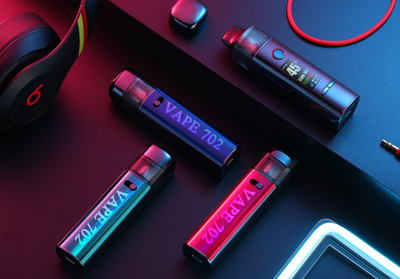for wholesale

Comparing Nicotine Salts vs. Freebase Nicotine: Understanding the Differences and Finding the Right Fit
Nicotine plays a crucial role in the vaping experience, and understanding the differences between nicotine salts and freebase nicotine is essential for vapers seeking their preferred vaping style. In this article, we will delve into the distinctions between nicotine salts and freebase nicotine, exploring their unique characteristics, strengths, and the suitable devices for each. By clarifying these differences, vapers can make informed decisions about which type of nicotine best aligns with their preferences and vaping goals.
Freebase Nicotine: The Classic Choice
Freebase nicotine is the traditional form of nicotine used in e-liquids for many years, and it remains a popular option for vape distributors. It is chemically extracted from tobacco leaves and has a higher alkalinity, resulting in a harsher throat hit at higher concentrations. Freebase nicotine is typically used in higher concentrations in e-liquids, ranging from 3mg to 24mg or higher, providing vapers with a wide range of nicotine strengths to choose from.
Strengths of Freebase Nicotine:
Versatility: Freebase nicotine is compatible with a wide range of vaping devices, including sub-ohm tanks, vape pens, and rebuildable atomizers (RDAs/RTAs).
High vapor production: Freebase nicotine e-liquids tend to produce denser clouds due to their higher VG (vegetable glycerin) content.
Suitable Devices for Freebase Nicotine:
Sub-ohm tanks: These tanks are designed for direct-to-lung (DTL) vaping and can handle higher wattages, making them ideal for freebase nicotine e-liquids with lower nicotine concentrations.
Nicotine Salts: A Smooth and Satisfying Alternative
Nicotine salts, on the other hand, are a relatively recent innovation in the vaping industry. They involve combining nicotine with an organic acid, resulting in a smoother and more enjoyable vaping experience, even at higher nicotine concentrations. Nicotine salts are naturally occurring in tobacco leaves, providing a more natural form of nicotine delivery.
Strengths of Nicotine Salts
Smooth throat hit: Nicotine salts offer a significantly smoother throat hit, even at higher nicotine strengths, compared to freebase nicotine. This makes them appealing to vapers who find freebase nicotine too harsh.
Rapid nicotine absorption: Nicotine salts are absorbed more quickly by the body, delivering a faster and more satisfying nicotine hit, similar to the sensation experienced when smoking traditional cigarettes.
Suitable Devices for Nicotine Salts
Pod systems: Nicotine salts are primarily used in pod systems, which are compact and user-friendly devices. Pod systems are designed for mouth-to-lung (MTL) vaping, mimicking the sensation of smoking. They operate at lower wattages and provide a tighter draw, allowing for a more effective delivery of nicotine salts.
Conclusion
Understanding the differences between nicotine salts and freebase nicotine is essential for vape distributors and their customers seeking their desired vaping experience. Freebase nicotine offers versatility and high vapor production, making it suitable for sub-ohm tanks and higher-powered devices. On the other hand, nicotine salts provide a smoother throat hit and more rapid nicotine absorption, making them a popular choice for pod systems and vapers who prefer higher nicotine concentrations. By considering these distinctions and the devices suited for each type of nicotine, vapers can make informed choices and find the perfect fit for their vaping needs. Whether it's the classic appeal of freebase nicotine or the smooth satisfaction of nicotine salts, both options offer unique advantages for vapers to explore and enjoy.
